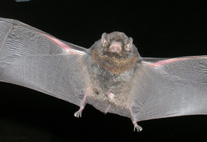Abstract
Monodelphis is the most diverse genus of the family Didelphidae, whose systematics and taxonomy have not yet been well established. Two of the included species, Monodelphis americana and M. iheringi, are difficult to distinguish because both present three dorsal black stripes. Furthermore, they show intra- and interspecific variation related to body size and pelage coloration. Because this variation is not well understood, there are problems in correctly identifying these species, which remain poorly collected and thus rare in zoological collections. This study evaluated the morphological and genetic variations in a sample of striped opossums from a single location in southeastern Brazil to understand if the morphological variation observed in individuals from the same location was indicative of the existence of more than one taxon. The comparative analyses of a series from this single locality with museum specimens of other locations revealed variations in the skin and skull qualitative characters that were related to age and sex. Morphological comparisons led to the identification of two morphogroups, which were corroborated by molecular data; the analysis of cytochrome b sequences indicated the existence of two clades, with an average divergence of 14%. Thus, the results support the existence of two taxa in the sample, defined as M. americana and M. iheringi. We confirmed the sympatry of these two species in a location in southeastern Brazil, presented morphological diagnostic characters to distinguish the two species, provided novel phylogenetic information on the group, and also demonstrated the existence of important intra- and interspecific morphological variations related to sexual dimorphism and ontogeny in the group. These results significantly contribute to information on the systematics of the genus.

